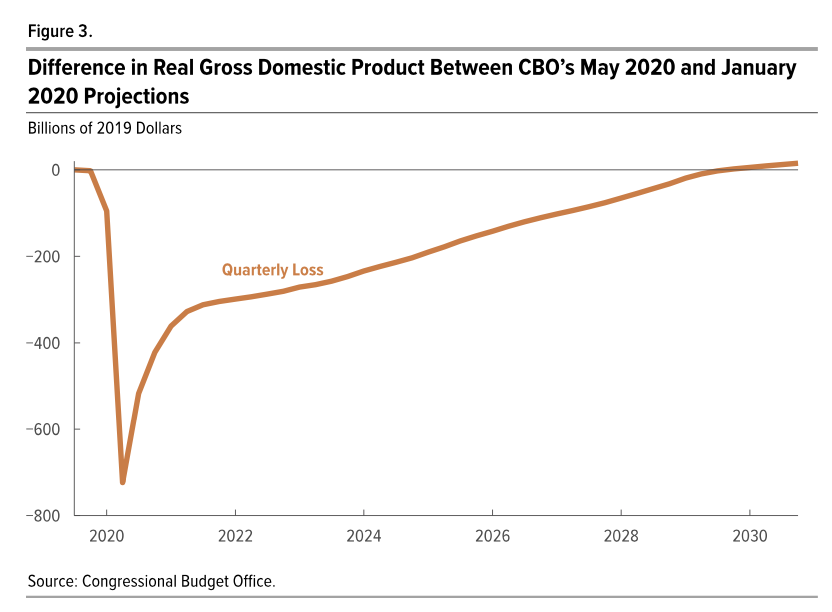US Pandemic Update: June 2020
-
Labor market: In May 2019, about 5.9 million people were unemployed in a labor force of 163 million. In May 2020, the full count of the unemployed is about 30.2 million, which when divided by the May 2019 labor force, implies an effective unemployment rate of 18.6%
-
GDP: By 2030, current projections foresee a cumulative loss in real GDP of $7.9 trillion
-
New Infections: About 100,000 people in the United States are getting infected with the SARS-CoV-2 virus each day
-
Currently Infected: 1.4 million people in the US
-
Ever Infected: 16 million people (4.8% of the US population)
-
Projected Deaths: The current projections for total deaths from Covid-19, the disease that the virus causes, are expected to be in the range 150,000 - 215,000 by October 1, 2020.
Unemployment
According to the BLS Employment Situation report released on June 5, 21.0 million people were in the labor force and officially classified as unemployed during May 2020. Compared to one year ago, another 4.5 million people had left the labor force. Finally, about 4.7 million people were misclassified as employed but away from work instead of being classified as they should have been, as unemployed on temporary layoff. The sum of these three numbers is 30.2 million, which is 18.6% of the labor force in May 2019.
The misclassification arose because the BLS survey questions were not designed to differentiate between being away from work because of an extended shelter in place order versus being on vacation, the usual reason why someone who is employed is away from work during the entire period covered by the survey. For more detail, see the explanatory note on page 6 of the BLS report.
The corresponding numbers for April were 34.9 million fewer workers, or 20.9% of the labor force from May 2019. So the results from May, as bad as they were, were a definite improvement relative to April.
Output
Back in January, the Congressional Budget Office projected GDP through 2030. It issued substantially lower projections in May. This figure comes from an analysis of the change in its forecasts.

The figure shows, for example, that projected real output for the second quarter of 2020 is now about $725 billion less than it was expected to be back in January. The sum of all the quarterly losses of this type through 2030 is $7.9 trillion. (This total is taken from page 2 of the report.)
Deaths and Infections
Here are today’s pandemic graphs for the United States from covid19-projections.com:

Given a value for the infection fatality rate, one can infer the number of new infections from the number of deaths that follow with a lag. The number of new infections is 3 to 4 times larger than the number of new cases because most people who get infected to not present themselves to a health care professional.


In the roadmap that I released two months ago, I argued that if we scaled up testing decisively, we could keep the fraction of the population that was ever infected with the virus below 5%. We failed to act. With 100k new infections every day, we will cross the 5% threshold by the end of June.

If we had been able to keep the number ever infected to less than 5%, we would have been able to keep total deaths to no more than the total to date, about 120k.